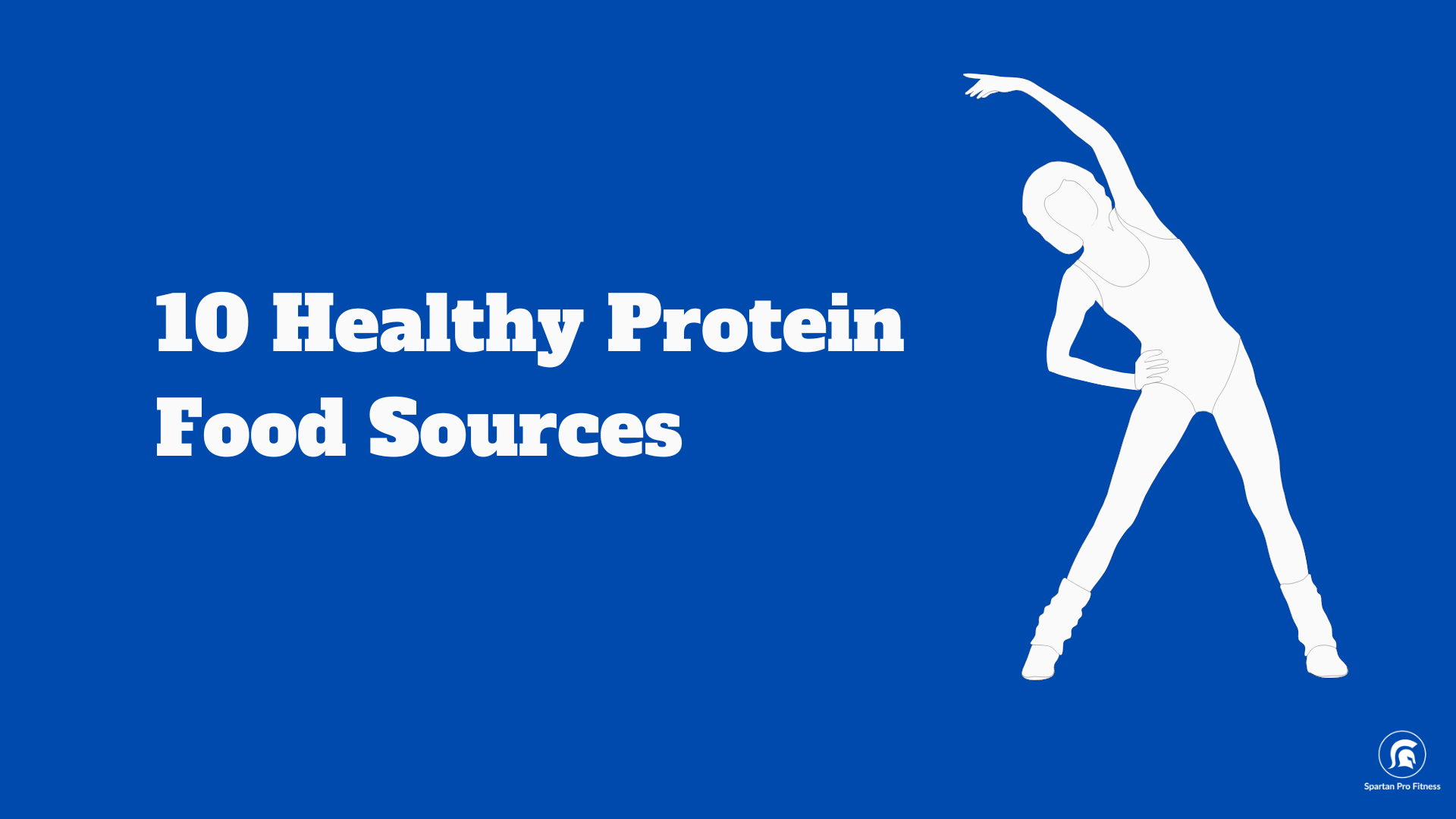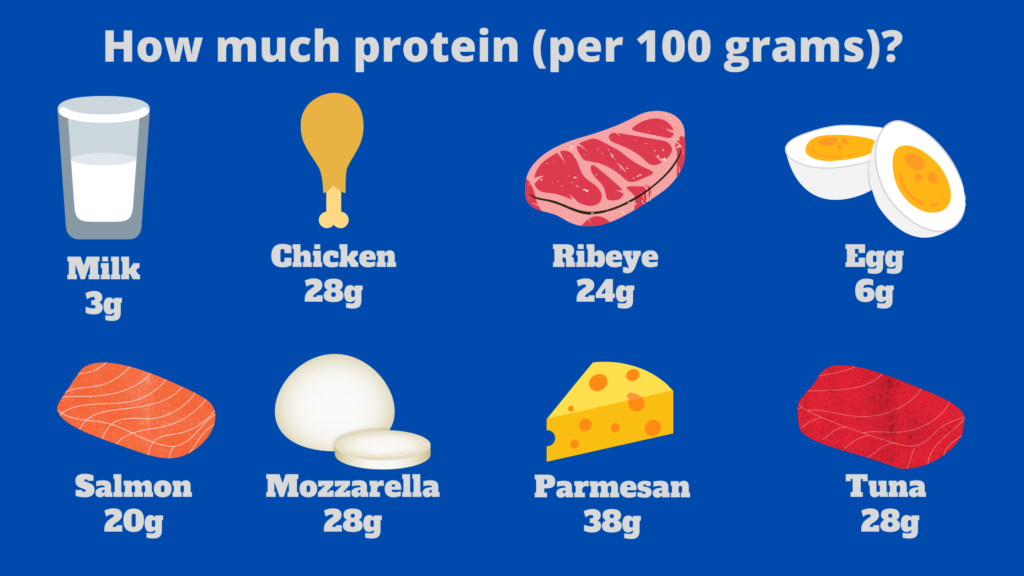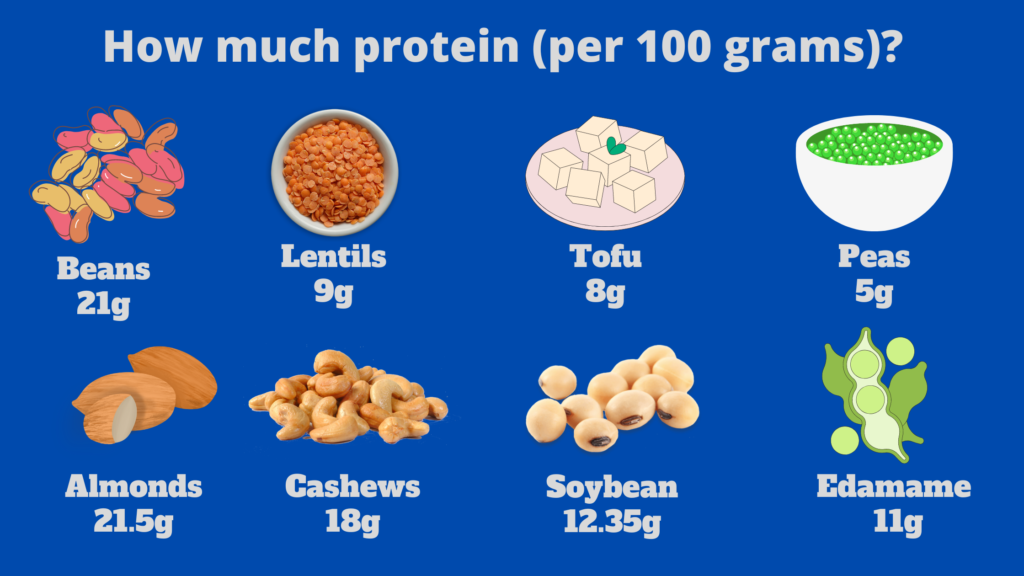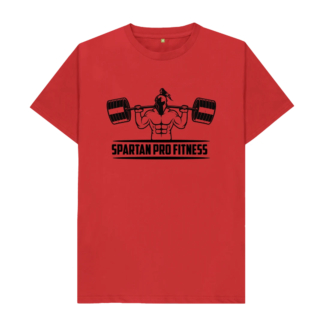
Proteins are one of the three macronutrients that the body needs in order to function properly. They are essential for building and repairing tissues, making hormones and enzymes, and for proper fluid balance. The body can make some proteins on its own, but others must be obtained through the diet. In this article, we’ll take a look at some of the best healthy protein food sources so that you can make sure you’re getting the nutrients you need.
What is protein?
Most people know that protein is an essential part of the diet, but many don’t really know what it is or why it’s so important. Protein is a macronutrient, which means that the body needs large amounts of it to function properly. It’s made up of amino acids, which are the building blocks of all cells in the body.
Protein is necessary for a variety of functions in the body, including:
- Building and repairing tissues
- Making enzymes and hormones
- Strengthening the immune system
- Regulating metabolism
- Transporting nutrients and oxygen throughout the body
Protein can be found in a variety of food sources, both animal and plant-based. Some good animal sources of protein include meat, poultry, fish, eggs, and dairy products. Plant-based sources include beans, lentils, tofu, nuts, and seeds.
It’s important to eat a variety of protein-rich foods to get all the essential amino acids your body needs. You can also get some amino acids from supplements, but it’s always best to get them from food first.
The body’s need for protein
The recommended dietary allowance (RDA) for protein is 0.36 grams per pound of body weight or about 55 grams per day for a 150-pound person. This may sound like a lot, but it’s actually not that difficult to get enough protein from food sources.
In a nutshell:
- Eggs: One large egg has about 6 grams of protein, and eggs are also a good source of vitamins A, D, and E.
- Chicken: A 3-ounce serving of chicken breast has about 27 grams of protein. Chicken is also a good source of niacin, phosphorus, and vitamin B6.
- Beef: A 3-ounce serving of lean beef has about 22 grams of protein. Beef is also a good source of iron, zinc, and vitamin B12.
- Fish: A 3-ounce serving of cooked fish has about 17 grams of protein. Fish is also a good source of omega-3 fatty acids, which have been linked to numerous health benefits.
- Milk: A cup of milk has about 8 grams of protein. Milk is also a good source of calcium, potassium, and vitamin D.
10 Healthy Protein Food Sources

1. Chicken
Chicken is a great source of protein. It is lean, low in fat, and contains all the essential amino acids your body needs. Chicken is also a good source of niacin, phosphorus, and vitamin B6. Chicken is a versatile meat that can be cooked in many different ways. It can be baked, grilled, roasted, or stir-fried. Chicken is a healthy food choice for people of all ages. It is especially good for athletes and bodybuilders because it helps to build muscle mass.
The different types of chicken
There are many different types of chicken that can be used as a protein source. Some of the most popular include:
- Boneless, skinless chicken breasts: These are the most popular type of chicken and are very versatile. They can be grilled, baked, roasted, or stir-fried.
- Chicken thighs: Chicken thighs are another popular option and are usually cheaper than chicken breasts. They can also be cooked in a variety of ways and are often considered to be more flavorful.
- Chicken wings are a good option for muscle building, as they are high in protein and contain a good amount of fat.
- Ground chicken: Ground chicken is a great option for making things like burgers, meatballs, or tacos. It can also be used in soup or chilli.
- Whole chickens: Whole chickens can be roasted or used to make chicken stock. They can also be cut up into individual pieces for cooking.
2. Beef
Beef is an excellent source of protein. It is packed with nutrients that are essential for the body, including iron, zinc, and B vitamins. Beef is also a good source of omega-3 fatty acids, which are beneficial for the heart and brain. A 3-ounce serving of beef contains about 25 grams of protein, which is 50% of the Daily Value (DV). It also contains about 10% of the DV for iron.
Not many people know but beef contains creatine, which is important for muscle development.
Eating beef has been linked to several health benefits. For example, it can help improve muscle mass and strength, and it can also help reduce the risk of heart disease. As a good source of zinc beef is important for immune system function.
There are many different cuts of beef to choose from, so you can find one that fits your budget and taste preferences. The most important thing to look for is lean beef, which has less fat and calories.
The fat content of beef varies depending on the cut. For example, a leaner cut such as sirloin steak contains about 5 grams of fat per 3-ounce serving, while a fattier cut such as ribeye steak contains about 15 grams of fat. The calorie content also varies depending on the fat content. A 3-ounce serving of lean beef contains about 160 calories, while a 3-ounce serving of fatty beef contains about 290 calories.
When cooking beef, it is important to cook it properly to avoid bacteria growth. Beef should be cooked to an internal temperature of 145 degrees Fahrenheit. Use a meat thermometer to check the temperature of the beef before eating it.
3. Fish
Fish is a great source of protein. It is low in fat and calories and high in omega-3 fatty acids, which are good for your heart health. Fish is also a good source of vitamins and minerals, including vitamin D, selenium, and iodine.
There are many different types of fish to choose from, so you can find one that suits your taste. Salmon, tuna, and mackerel are all high in protein. You can cook fish in many different ways, including baking, grilling, and frying.
- Salmon: This type of fish is not only packed with protein but also Omega-3 fatty acids, which are great for your heart health.
- Tuna: Another fish that is high in protein and omega-3s, tuna is a great option for those looking for a healthy protein source.
- Shrimp: Shrimp is a lean protein source that is low in calories and fat. It’s also a good source of selenium, a mineral that helps protect against cell damage.
- Cod: Cod is a mild-flavoured fish that is a good source of protein and vitamin B12. B12 is important for maintaining healthy red blood cells.
4. Eggs
Eggs are an excellent source of protein. One large egg contains about six grams of protein, which is about 12% of the daily recommended intake. Eggs are also a good source of several other nutrients, including vitamin D, iron, and choline.
Eggs are very versatile and can be cooked in many different ways. They can be boiled, fried, scrambled, or made into an omelette. Eggs can also be added to other dishes such as salads, soups, and casseroles.
Eggs are an affordable source of protein. One dozen eggs typically cost less than £250 ($3.00). This makes them a great option for people on a budget.
Overall, eggs are a great source of protein. They are affordable and versatile and can be cooked in many different ways.
5. Cottage cheese
Cottage cheese is an excellent source of protein. It is made from cow’s milk that has been curdled and strained. Cottage cheese is low in fat and calories, but high in protein. It also contains many essential nutrients, including calcium, phosphorus, and vitamin B12.
Cottage cheese can be eaten plain or used in recipes. It is often used as a spread on bread or crackers. It can also be used in dips, sauces, and soups. Cottage cheese is a versatile ingredient that can be used in many different ways.
The best way to get your protein if you’re vegetarian or vegan

Protein is an essential part of a healthy diet, but it can be difficult to get enough if you’re not eating meat or other animal products. Luckily, there are plenty of delicious and healthy plant-based protein sources that can help you reach your daily goals.
Here are some of the best plant-based protein sources:
- Beans and legumes: Beans and legumes are a great source of protein, fibre, vitamins and minerals. They’re also low in fat and calories, making them a perfect food for weight loss or maintenance. Some great options include black beans, kidney beans, lentils, chickpeas, and soybeans.
- Nuts and seeds: Nuts and seeds are another excellent sources of plant-based protein. They’re also a good source of healthy fats, fibre, vitamins and minerals. Some great options include almonds, cashews, pistachios, pumpkin seeds, and sunflower seeds.
- Tofu and tempeh: Tofu and tempeh are two versatile soy products that make a great addition to any meal. They’re high in protein and calcium, and they can be used in place of meat in many recipes.
6. Lentils
Lentils are an excellent source of protein. They are low in calories and fat, and they contain a high amount of protein. One cup of cooked lentils contains 18 grams of protein. Lentils are also a good source of fibre and iron.
Lentils can be used in a variety of dishes. They can be added to soups, salads, or rice dishes. They can also be used as a meat substitute in recipes. Lentils are a versatile ingredient that can be used in many different ways.
If you’re looking for an excellent source of protein, lentils are a great option. They’re low in calories and fat, and they’re packed with protein. Lentils are also a good source of fibre and iron. So if you’re looking for a healthy, hearty ingredient to add to your meals, look no further than lentils.
7. Beans
There are many different types of beans, including black beans, kidney beans, and lentils. Beans are a good source of protein, fibre, vitamins and minerals. They are also low in calories and fat. Black beans, for example, contain about 15 grams of protein per cup.
Beans can be used in a variety of dishes, such as soups, stews, salads, and casseroles. They can also be added to rice or other grain dishes. You can even make bean burgers or bean burritos.
If you’re looking for a good source of protein, beans are a great option. They’re versatile, nutritious, and low in calories and fat.
How to cook beans perfectly every time
If you’re looking for a delicious and healthy protein source, look no further than beans! Here are some tips on how to cook them perfectly every time.
- Soak your beans overnight. This will help them cook more evenly and prevent them from drying out.
- Season your beans with spices or herbs of your choice. This will give them extra flavour and make them even more enjoyable to eat.
- Cook your beans in a slow cooker or pressure cooker. This will ensure that they retain their nutrients and come out nice and tender.
- Serve your cooked beans over rice, quinoa, or other grains for a complete and satisfying meal.
Recipes with beans
There are tons of recipes out there that incorporate beans as a protein source! Here are some of our favourites:
- Black Bean Brownies: these brownies are delicious and packed with protein!
- Chickpea Curry: this curry is a great way to get your protein fix, and it’s super tasty too!
- Bean Burritos: these burritos are a great option for a quick and easy meal. Plus, they’re packed with protein and flavour!
8. Soy
Soy is a great source of protein for vegetarians and vegans. It is also low in fat and cholesterol. Soy contains all of the essential amino acids that our bodies need. This makes it a complete protein source.
Soy is a good source of protein for athletes. It helps to build muscle and repair tissue. Soy is also easy to digest, which makes it a good choice for people who are recovering from an injury or illness.
Tofu
Tofu is made from soy milk that has been curdled and pressed into solid blocks. It is a good source of protein for vegetarians and vegans. Tofu is low in calories and fat but high in protein and calcium. It is also a good source of iron and magnesium.
Tempeh
Tempeh is made from fermented soybeans. It is a good source of protein for vegetarians and vegans. Tempeh is high in fibre and vitamin B12. It is also a good source of calcium, iron, and magnesium.
9. Nuts and seeds
Nuts and seeds are excellent sources of protein. They are packed with nutrients and healthy fats that help keep you feeling full and satisfied. Almonds, cashews, pistachios, and pumpkin seeds are all great sources of protein. You can also get protein from nut butter, such as almond butter or peanut butter.
One ounce of almonds, for example, contains 6 grams of protein and 14 grams of healthy unsaturated fats. Almonds are also a good source of vitamin E, magnesium, and fibre. Brazil nuts are another good option, providing 5 grams of protein and 4 grams of fibre per ounce.
Pumpkin seeds are a surprising source of protein, with 7 grams per ounce. They are also a good source of iron, magnesium, zinc, and copper. Sunflower seeds are another good choice, with 6 grams of protein and 5 grams of fibre per ounce.
How to incorporate nuts and seeds into your diet
If you’re looking to add more protein to your diet, nuts and seeds are a great option. Both are packed with nutrients and offer a variety of health benefits. Here are some tips on how to incorporate them into your diet:
- Add a handful of nuts or seeds to your morning oatmeal or yoghurt.
- Use nut butter as a spread on toast or as a dip for fruits and vegetables.
- Mix nuts and seeds into salads for a boost of protein.
- Include them in homemade energy bars or homemade granola.
- Use them as a topping for soups or stews.
- Enjoy them as a snack on their own or with other healthy snacks like dried fruit or dark chocolate.
The top 8 nuts to eat for better health – nutrient comparison chart
| Based On A One-Ounce Portion | Almond | Brazil Nut | Cashew | Hazelnut | Macadamia Nut | Pecan | Pistachio | Walnut |
| Calories | 1602 | 190 | 160 | 180 | 200 | 200 | 160 | 190 |
| Protein (g) | 6 | 4 | 4 | 4 | 2 | 3 | 6 | 4 |
| Total Fat (g) | 14 | 19 | 13 | 17 | 22 | 20 | 13 | 19 |
| Saturated Fat (g) | 1 | 4.5 | 3 | 1.5 | 3.5 | 2 | 1.5 | 1.5 |
| Polyunsaturated Fat (g) | 3.5 | 7 | 2 | 2 | 0.5 | 6 | 4 | 13 |
| Monounsaturated Fat (g) | 9 | 7 | 8 | 13 | 17 | 12 | 7 | 2.5 |
| Carbohydrates (g) | 6 | 3 | 9 | 5 | 4 | 4 | 8 | 4 |
| Dietary Fiber (g) | 4 | 2 | 1.5 | 2.5 | 2.5 | 2.5 | 3 | 2 |
| Potassium (mg) | 208 | 187 | 160 | 193 | 103 | 116 | 285 | 125 |
| Magnesium (mg) | 77 | 107 | 74 | 46 | 33 | 34 | 31 | 45 |
| Zinc (mg) | 0.9 | 1.2 | 1.6 | 0.7 | 0.4 | 1.3 | 0.7 | 0.9 |
| Vitamin B6 (mg) | 0 | 0 | 0.1 | 0.2 | 0.1 | 0.1 | 0.3 | 0.2 |
| Folate (mcg) | 12 | 6 | 20 | 32 | 3 | 6 | 14 | 28 |
| Riboflavin (mg) | 0.3 | 0 | 0.1 | 0 | 0 | 0 | 0.1 | 0 |
| Niacin (mg) | 1.0 | 0.1 | 0.4 | 0.5 | 0.7 | 0.3 | 0.4 | 0.3 |
| Vitamin E (mg) | 7.3 | 1.6 | 0.3 | 4.3 | 0.2 | 0.4 | 0.7 | 0.2 |
| Calcium (mg) | 76 | 45 | 13 | 32 | 20 | 20 | 30 | 28 |
| Iron (mg) | 1.1 | 0.7 | 1.7 | 1.3 | 0.8 | 0.7 | 1.1 | 0.8 |
Note: All of the nuts are unsalted; almonds, Brazil nuts, hazelnuts, pecans and walnuts are unroasted; cashews, macadamia nuts and pistachios are dry roasted. One-Ounce Portion = 28 grams.
Recipes with Nuts and Seeds
- Almond Butter and Banana Sandwich: Spread almond butter on whole wheat bread and top with sliced bananas for a sweet and satisfying snack.
- Pumpkin Seed Parmesan: Add pumpkin seeds to your next batch of homemade pasta sauce for a boost of flavour and nutrition.
- Sunflower Seed Pesto: Toss sunflower seeds in with your favourite pesto recipe for a nutty twist. Serve over grilled chicken or fish.
- Chocolate Peanut Butter Energy Bites: Mix peanut butter, oats, ground flaxseed, and cocoa powder together for a sweet and healthy snack that will give you sustained energy throughout the day. No baking required!
10. Peas
There are many different sources of protein, but peas are one of the best. Peas are a good source of both animal and vegetable protein. They are also a good source of fibre, vitamins, and minerals. Peas are low in fat (no cholesterol!) and calories, making them a healthy choice for people who are trying to lose weight. Pea protein is a complete protein, meaning it contains all the essential amino acids your body needs.
Peas can be eaten fresh, frozen, or canned. They can be added to soups, stews, salads, and other dishes. Peas can also be used as a flour substitute in baking. Pea protein powder is also available and can be used to make shakes and smoothies.


